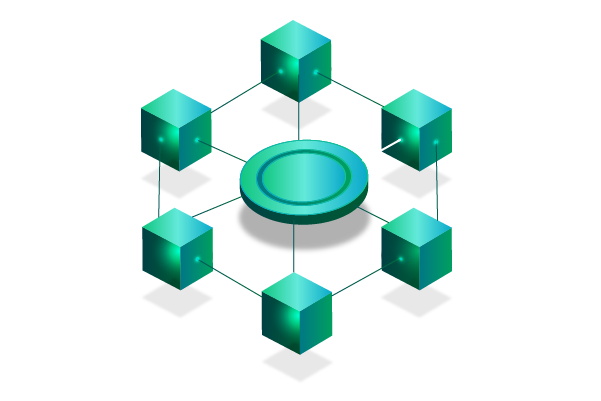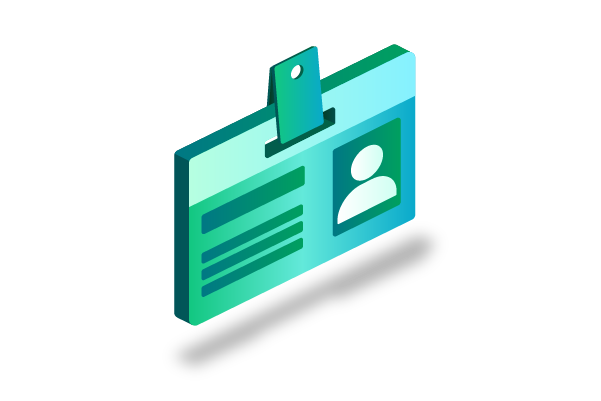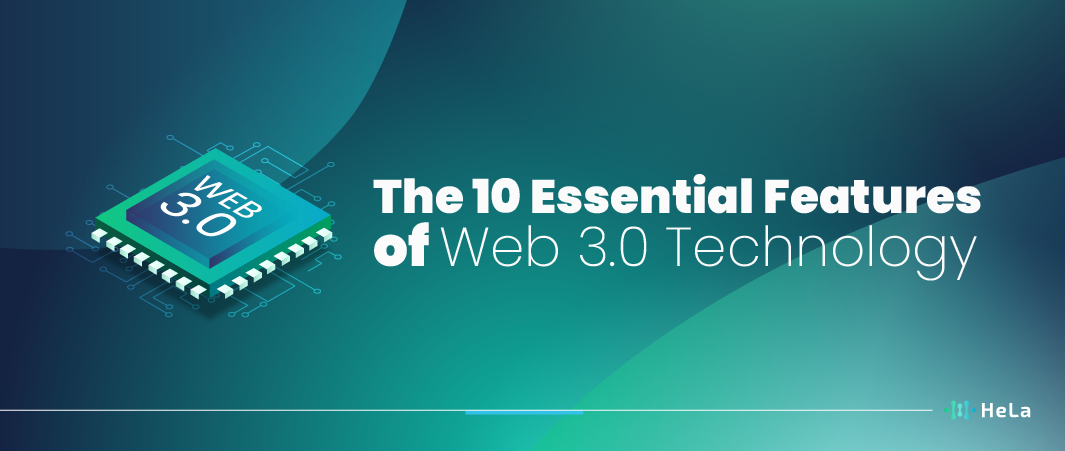The internet, as we’ve come to understand it, is in a perpetual state of evolution. From the static pages of Web 1.0 to the dynamic, interactive landscape of Web 2.0, our online experiences have transformed immensely. Now, with Web 3.0 on the horizon, the internet is poised to undergo another fundamental shift. Dubbed the ‘semantic web,’ Web 3.0 promises a smarter, more connected digital universe. In this article, we will delve deep into the heart of this emerging technology, unraveling the ten core features of Web 3.0 that set it apart.
Before we dive into the intricacies of Web 3.0, it’s essential to understand that this isn’t just another update. Instead, it represents a significant leap, much like the transition from the textual Web 1.0 to the social media-driven Web 2.0. Prepare to venture beyond the basics and into the exciting features that will shape our online future.
The 10 Core Features of Web 3.0
Web 3.0, often referred to as the next generation of the internet, represents a significant shift in the way we interact with digital technology and data. It builds upon the foundation of Web 2.0, which introduced user-generated content and social networking. Web 3.0 is characterized by several core features that distinguish it from its predecessors. Here are 10 key features of Web 3.0:
1. Semantic Understanding
Web 3.0, unlike its earlier versions, is all about understanding what we’re really looking for online. Instead of just matching keywords, it’s like having a smart friend who can grasp the bigger picture. These features of Web 3.0 rely on fancy algorithms that help it understand the context of our queries, making sure we get results that truly hit the mark.
Think of it this way: in the past, we’d search with words and hope for the best. But now, with the features of Web 3.0, it’s like having a conversation with the internet. It can piece together the context of our questions, giving us results that are not only accurate but also genuinely relevant to what we’re after. So, next time you’re searching for something, remember that Web 3.0 is like your trusty, context-savvy companion in the digital world.
2. Artificial Intelligence Integration
Integrating AI into websites and applications brings about a more personalized web experience, a key aspect of web 3.0. This means that these digital platforms will not just be static pages but will dynamically adapt to users’ behaviors and preferences in real-time. Picture this: as you navigate through a website or use an app, they will actively learn from your actions, understanding what you like and dislike. With these insights, they can then offer you tailored content, product recommendations, or even solutions that align precisely with your individual needs and interests.
This exciting fusion of AI and the web, as part of the features of web 3.0, promises to make our online interactions more intuitive and enjoyable. It’s like having a personal assistant for the digital world, constantly working to enhance your online experience by delivering precisely what you’re looking for, all while respecting your privacy and preferences. So, get ready for a web that knows you better and serves you like never before.
Also Read: 7 Top Solana Killers to Watch in 2023
3. Decentralization
Web 3.0 is all about giving us more control over our data. You see, right now, a lot of our stuff online is stored in big, centralized places. But with the features of Web 3.0, things are changing. It’s like a digital revolution, thanks to technologies like blockchain.
So, what’s happening is that our data won’t be locked up in those big silos anymore. Instead, it’ll be spread out in a decentralized way. That means we can keep our information more private and secure. Imagine having more say over who gets to see your online stuff – that’s the power of Web 3.0. It’s like a shift towards a more democratic internet where we’re the ones in charge of our data.
4. Interoperability
In the world of Web 3.0, gone are the days when platforms used to work independently. Nowadays, with the exciting features of Web 3.0, systems and applications are becoming much better at talking to each other. This means they can share data and work together more smoothly, which ultimately makes our experience as users much more enjoyable, no matter which platforms we use.
Imagine using your favorite social media app to plan a weekend getaway and seamlessly sharing your plans with your preferred navigation app. These newfound features of Web 3.0 allow for such effortless interactions between different apps and systems, making our digital lives more interconnected and user-friendly. It’s all about breaking down the barriers and creating a more cohesive online experience.
5. Virtual and Augmented Reality
As technology keeps getting better, Web 3.0 is all set to bring virtual and augmented reality into our digital lives in a smooth and natural way. These exciting developments will make our online experiences even more immersive and engaging. With the features of Web 3.0, you can expect to seamlessly blend the virtual and real world, creating a whole new dimension of possibilities.
Imagine shopping online where you can try on clothes in a virtual dressing room, or attending a virtual concert where you feel like you’re right there in the front row. This integration of virtual and augmented reality in Web 3.0 will open up endless opportunities for gaming, education, entertainment, and much more. It’s like bringing a touch of magic to the internet, making it more interactive and captivating than ever before. So get ready for a future where the lines between the digital and physical worlds blur, thanks to the incredible features of Web 3.0.
6. 3D Graphics
As web technology keeps evolving, we can expect a shift toward 3D graphics becoming the new norm. With improvements in browser capabilities, websites and applications will gradually move away from plain, flat designs to more immersive 3D landscapes, thereby enhancing the way we see and interact with digital content. This transition aligns with the emerging features of web 3.0, where the internet becomes a more dynamic and visually engaging space.
In this exciting future, users can look forward to experiencing websites and apps in a whole new way. Instead of static images and text, they’ll navigate through 3D environments that make information more visually appealing and interactive. These 3D features of web 3.0 will not only enhance the aesthetic appeal of online content but also boost engagement and user satisfaction, making the online experience richer and more immersive for everyone.
7. Ubiquitous Connectivity
Web 3.0, often referred to as the next big thing on the internet, offers a whole new level of connectivity. Picture this: with the rise of countless smart gadgets through the Internet of Things (IoT), our daily routines are set to become more interconnected than ever. These features of Web 3.0 mean that our homes, workplaces, and even our cities will become smarter and more adaptable, ushering in a world where everything around us is in sync and responsive.
In the realm of Web 3.0, connectivity takes center stage. It’s not just about browsing websites; it’s about connecting everything in our lives. Imagine your coffee maker talking to your alarm clock, so your coffee is brewed and ready the moment you wake up. That’s the kind of seamless, ubiquitous connectivity we can look forward to in the age of Web 3.0, where everyday objects become smart, and our world becomes more efficient and user-friendly.
8. Advanced APIs
Advanced APIs are becoming increasingly essential in the world of software integration, playing a pivotal role in connecting various programs and enhancing their ability to communicate seamlessly. These sophisticated APIs are like the glue that binds different software applications, enabling them to work harmoniously. They not only facilitate data exchange but also offer a range of functionalities that simplify complex tasks. As we transition into the features of web 3.0, these advanced APIs are poised to become even more crucial in shaping the digital landscape.
In the context of web 3.0, advanced APIs are set to revolutionize the way software systems interact with each other. This next-generation web promises a more decentralized, interconnected, and intelligent internet experience. Advanced APIs will be the linchpin in this evolution, empowering applications to tap into decentralized data sources, leverage smart contracts, and create highly personalized user experiences. As a result, the era of web 3.0 will be marked by smoother, more efficient software integrations, fostering innovation and opening up new possibilities in the digital realm.
9. Personal Data Ownership
In the exciting era of Web 3.0, there’s a game-changing shift happening with our personal data. Unlike in the past, where we were mere data consumers, now we’re stepping into a world where we truly own our data. This means we get to call the shots on who can access and use our information. With features of Web 3.0 in play, it’s like we’re reclaiming control over our digital lives. Imagine having the power to decide who can peek at your data and who can’t, putting you firmly in the driver’s seat when it comes to your online privacy and security.
In this new landscape, your data becomes your digital treasure, not just something out there in the wild web. It’s a transformation that promises a more user-centric and transparent online experience. So, get ready to own your data like never before as we embrace the exciting features of Web 3.0, giving you the freedom to determine who gets a piece of your digital world.
10. Greater Security Protocols
In the realm of Web 3.0, security takes center stage as a top priority. This next evolution of the internet introduces enhanced security features of Web 3.0 that are designed to shield user data from the ever-increasing cyber threats. One key aspect of this heightened security is the implementation of advanced encryption methods, which act like digital shields, protecting your personal information as it travels across the web. Additionally, Web 3.0 relies on decentralized storage, spreading your data across a network of computers rather than storing it in a single vulnerable location. This not only enhances security but also ensures data availability even in the face of hardware failures or cyberattacks. Combined with more stringent protocols, these features of Web 3.0 form a robust defense system against potential threats, offering users peace of mind and confidence in their online interactions.
By prioritizing security in this way, Web 3.0 aims to create a safer online environment where individuals and businesses can confidently engage in digital activities. These advancements are crucial in safeguarding sensitive information and maintaining the trust of users as we continue to navigate the digital landscape. In essence, the security features of Web 3.0 represent a significant leap forward in protecting your digital life from prying eyes and potential breaches.
Decentralized Finance (DeFi) and Web 3.0

Web 3.0 brings some exciting changes, and one of the standout advancements is the rise of decentralized finance, or DeFi. It feels like a revitalizing breeze in the realm of finance. Unlike traditional financial systems that rely on banks and other middlemen, DeFi platforms run on blockchain technology. This means people can interact directly with one another, making transactions more peer-to-peer. These features of Web 3.0 not only make financial services more accessible to everyone but also open up the door to new and creative financial products and methods.
With DeFi, it’s like banking without the banks. It’s all about cutting out the middleman and giving people more control over their finances. Imagine being able to borrow money or earn interest on your assets without needing a traditional bank. It’s not just about democratizing finance; it’s also about spurring innovation in how we manage our money. And all of this is made possible by the features of Web 3.0, where blockchain technology takes center stage, ensuring transparency and security in financial transactions.
In this financial revolution, DeFi isn’t just a buzzword; it’s a game-changer. It’s reshaping how we think about money, savings, and investments. Thanks to the features of Web 3.0, we’re entering an era where financial services are becoming more inclusive, efficient, and adaptable to the needs of individuals, without the need for traditional institutions to facilitate them.
The Role of Digital Identity in Web 3.0

Digital identity is set to play a vital role in the features of Web 3.0. In this exciting new phase of the internet, users will have greater control over their online identities, breaking free from the dependence on centralized authorities. Essentially, this means that personal information and digital credentials will be stored in a decentralized way, giving users true ownership and autonomy. This shift not only promises to bolster online privacy but also reduces the vulnerabilities associated with data breaches in the traditional, centralized systems.
In Web 3.0, digital identity becomes a cornerstone, allowing individuals to manage and safeguard their online personas like never before. This evolution is all about putting users in the driver’s seat, empowering them with control over their personal data. By storing information in a decentralized manner, the digital landscape becomes more secure and resilient, as it reduces the reliance on single points of failure. This shift is poised to redefine how we interact and transact in the digital world, promising a future where individuals have the keys to their digital kingdoms, enhancing security and privacy in the features of Web 3.0.
The Environmental Impact of Web 3.0 Technologies

As we dive into the exciting features of Web 3.0, it’s important to shine a light on the environmental impacts these technologies can have. The digital realm’s expansion has led to a growing carbon footprint, and Web 3.0, with its blockchain and decentralized systems, is no exception. These innovations offer numerous benefits, but they also come with a downside – substantial energy consumption, particularly through energy-intensive proof-of-work mechanisms in blockchain. To ensure a more eco-friendly digital future, it’s vital that we prioritize sustainable solutions and actively explore green alternatives as we embrace the features of Web 3.0.
Also Read: What is Wrapped Tokens? Purpose and Functionality
In this era of Web 3.0, where decentralization and trustless systems are the norm, we must acknowledge the strain they place on our environment. Blockchain, which underpins many Web 3.0 applications, can be quite energy-demanding. To counter this, we need to invest in energy-efficient consensus mechanisms like proof-of-stake or explore hybrid approaches that balance innovation with environmental responsibility. This way, we can enjoy the exciting features of Web 3.0 while minimizing the environmental impact, paving the way for a more sustainable and greener digital landscape.
Conclusion
The evolution from Web 2.0 to Web 3.0 is not just a step forward but a giant leap into a new era of the internet. With its ten core features, Web 3.0 promises a digital realm that is smarter, more intuitive, and responsive to our needs. As users, we stand on the precipice of this new age, ready to embrace the vast possibilities it offers.
Moreover, as technology developers and digital enthusiasts, the responsibility lies with us to harness these features ethically. The tools and technologies that form the backbone of Web 3.0, from AI to blockchain, come with their challenges. However, with informed use and ethical considerations, the internet’s future looks bright, decentralized, and user-centric.
In wrapping up, while Web 3.0 is still in its infancy, its potential is evident. As we transition into this new phase, it offers opportunities and challenges. But, given the transformative features highlighted, there’s no doubt that the future of the internet is not just promising but revolutionary.
Disclaimer: The information provided by HeLa Labs in this article is intended for general informational purposes and does not reflect the company’s opinion. It is not intended as investment advice or recommendations. Readers are strongly advised to conduct their own thorough research and consult with a qualified financial advisor before making any financial decisions.

I am Carina Caringal, a technical writer specializing in blockchain engineering concepts, decentralized systems, crypto infrastructure, and Web3 technologies. My work focuses on analyzing and translating complex technical mechanisms into precise, structured, and insightful content for both developers and non-technical readers who want a deeper understanding of the decentralized ecosystem.
My background in blockchain and cryptocurrency is rooted in years of independent research, continuous learning, and hands-on exploration across multiple protocols and network architectures. I study the underlying mechanics of distributed ledger technology, from consensus algorithms and smart contract logic to network scalability, security models, cryptographic principles, and interoperability frameworks. This technical foundation shapes the way I approach every article, ensuring accuracy, depth, and relevance.
- Carina Caringalhttps://helalabs.com/blog/author/carina-caringal/
- Carina Caringalhttps://helalabs.com/blog/author/carina-caringal/
- Carina Caringalhttps://helalabs.com/blog/author/carina-caringal/
- Carina Caringalhttps://helalabs.com/blog/author/carina-caringal/

